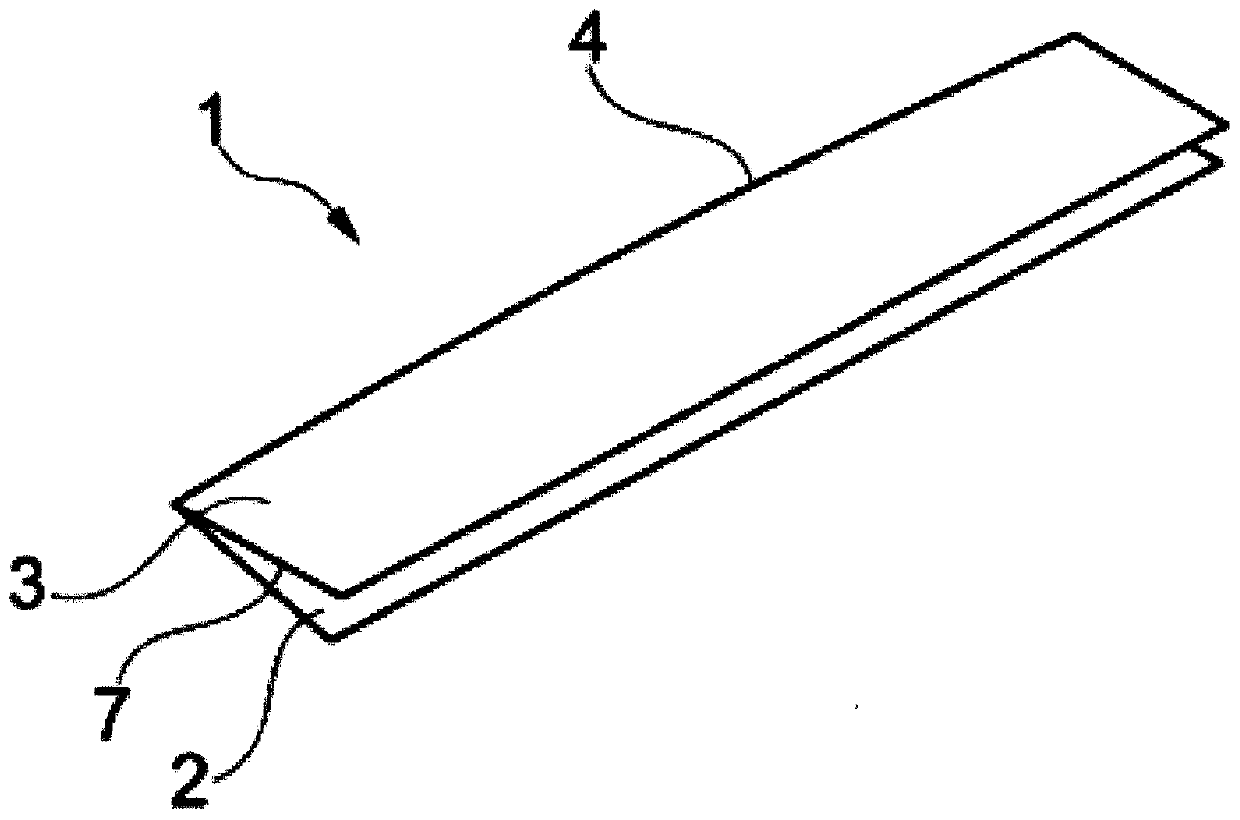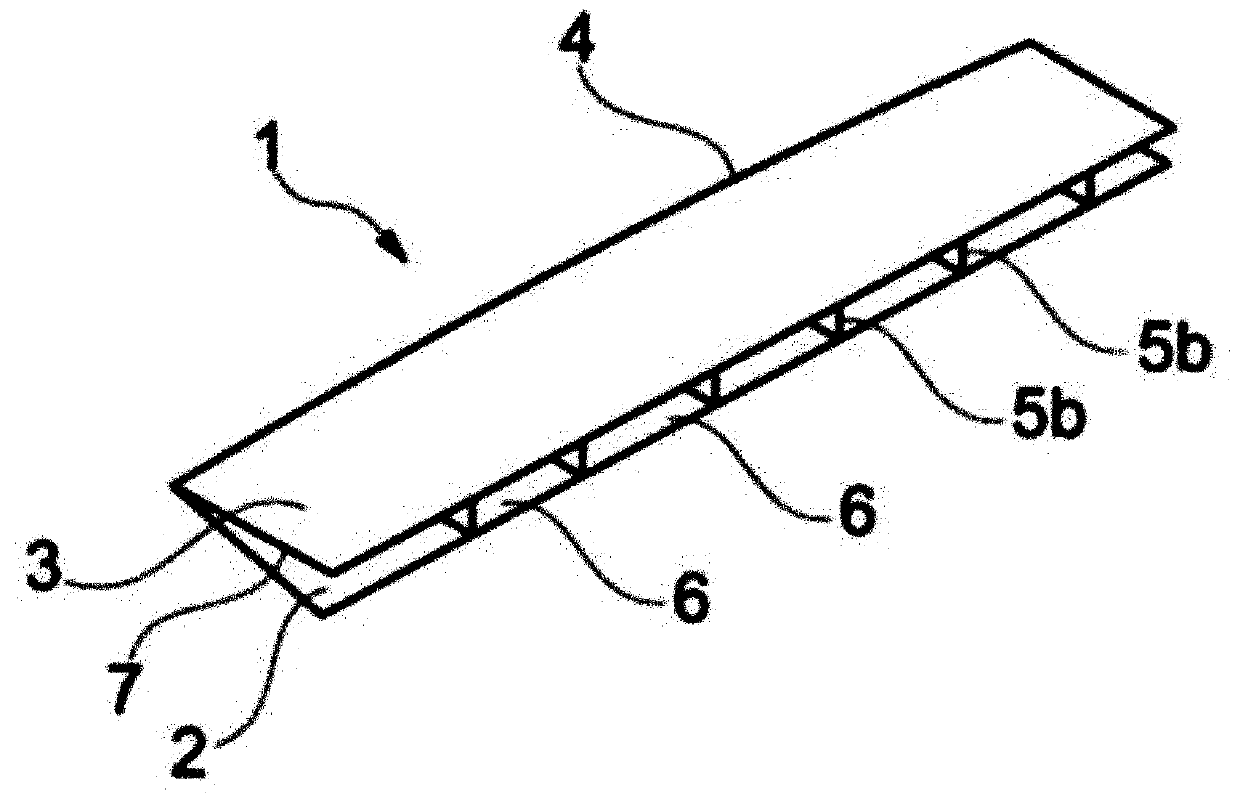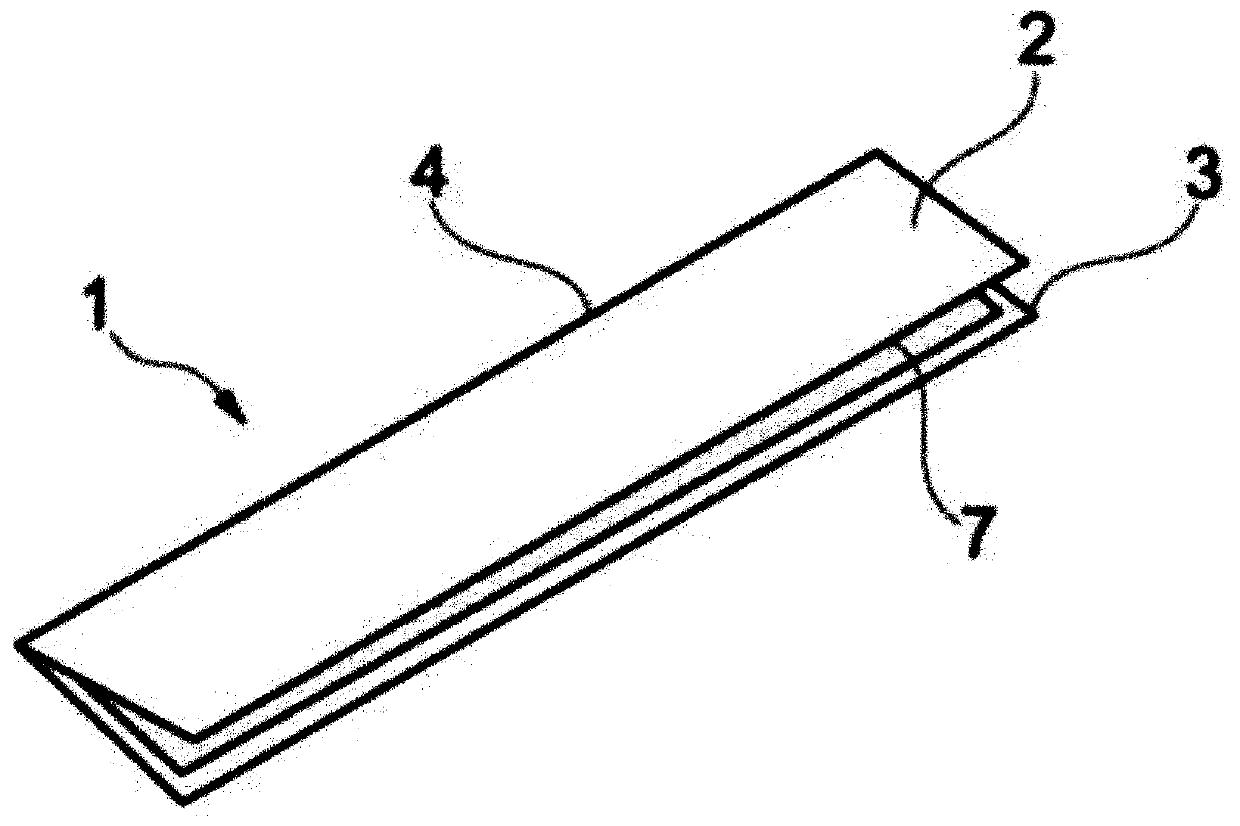Ecdysozoans trap
A technology for traps and animals, which is applied to traps for molting animals and the field of insect pests caused by molting animals. It can solve problems such as time-consuming and repeated mechanical control, human poisoning, and user health risks.
- Summary
- Abstract
- Description
- Claims
- Application Information
AI Technical Summary
Problems solved by technology
Method used
Image
Examples
Embodiment 1
[0196] Example 1: roughness test
[0197] test 1
[0198] Materials and methods
[0199] Two traps (one with a smooth base and one with a rough base) were placed face to face in a plastic tray. The smooth bottom plate was made of smooth plastic (polypropylene 55 μm, called smooth bottom plate) from Pockets Din (Brony by doculine, 099007). The rough bottom plate is made of sandpaper (240 grit / cm 2 , known as the rough floor). The top plate of the trap is made of black paper, the inner surface of the black paper is coated with double-sided tape Twenty-five bed bug individuals (5 males, 5 females and 15 nymphs of various stages) were placed in the center of the tray. After 15 hours the number of instances adhered to the double-sided tape was recorded.
[0200] result
[0201] The results are listed in Table 1.
[0202] Table 1: Comparison between smooth and rough bases
[0203] smooth floor Rough floor p-value R1 3 17 <0.01 R2 3 21 <0.001...
Embodiment 2
[0218] Example 2: Top plate coated with double-sided tape
[0219] Materials and methods
[0220] The trap used in this experiment is shown in Figure 1. The sloped top plate is coated with double-sided tape on its inner surface The trap is 135mm long, 15mm wide, and the opening of the trap is 1.5mm high. The trap consisted of 9 walls, 2 outer walls and 7 inner walls, defining 9 voids with a length of 15 mm.
[0221] The trap was placed in a 30 cm x 20 cm plastic tray, the bottom of which was polished with sandpaper. Fifteen bedbug individuals (5 males, 5 females and 5 nymphs of different stages) were placed in the tray. After 15 hours the number of instances adhered to the double-sided tape was recorded.
[0222] result
[0223] After 15 hours, 73% of the males, 80% of the females and 68% of the nymphs were trapped in the trap, ie irreversibly glued to the top plate of the trap.
Embodiment 3
[0224] Example 3: Evaluation of double-sided tape as an insect repellent
[0225] The test was designed to determine whether double-sided tape is not a repellent for bedbugs.
[0226] Materials and methods
[0227] The test procedure is the same as in Example 2. Control traps without double-sided tape were placed in plastic trays relative to the test traps, with the exception of the test traps containing double-sided tape coated on the inside surface of the top plate.
[0228] result
[0229] The results showed that bedbugs evaded equally well in the test traps (with tape) and in the control traps (without tape). Therefore, double-sided tape is not a repellent for bedbugs.
PUM
 Login to View More
Login to View More Abstract
Description
Claims
Application Information
 Login to View More
Login to View More - R&D
- Intellectual Property
- Life Sciences
- Materials
- Tech Scout
- Unparalleled Data Quality
- Higher Quality Content
- 60% Fewer Hallucinations
Browse by: Latest US Patents, China's latest patents, Technical Efficacy Thesaurus, Application Domain, Technology Topic, Popular Technical Reports.
© 2025 PatSnap. All rights reserved.Legal|Privacy policy|Modern Slavery Act Transparency Statement|Sitemap|About US| Contact US: help@patsnap.com



